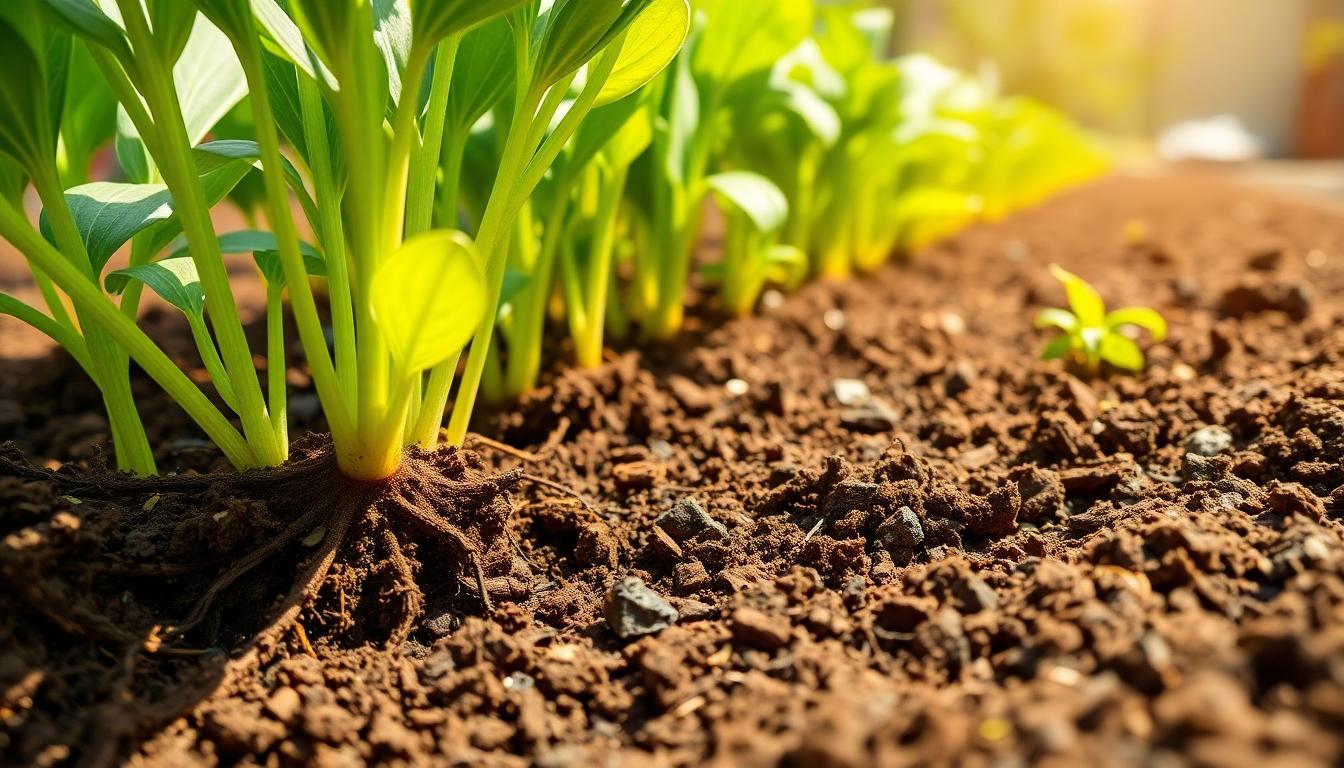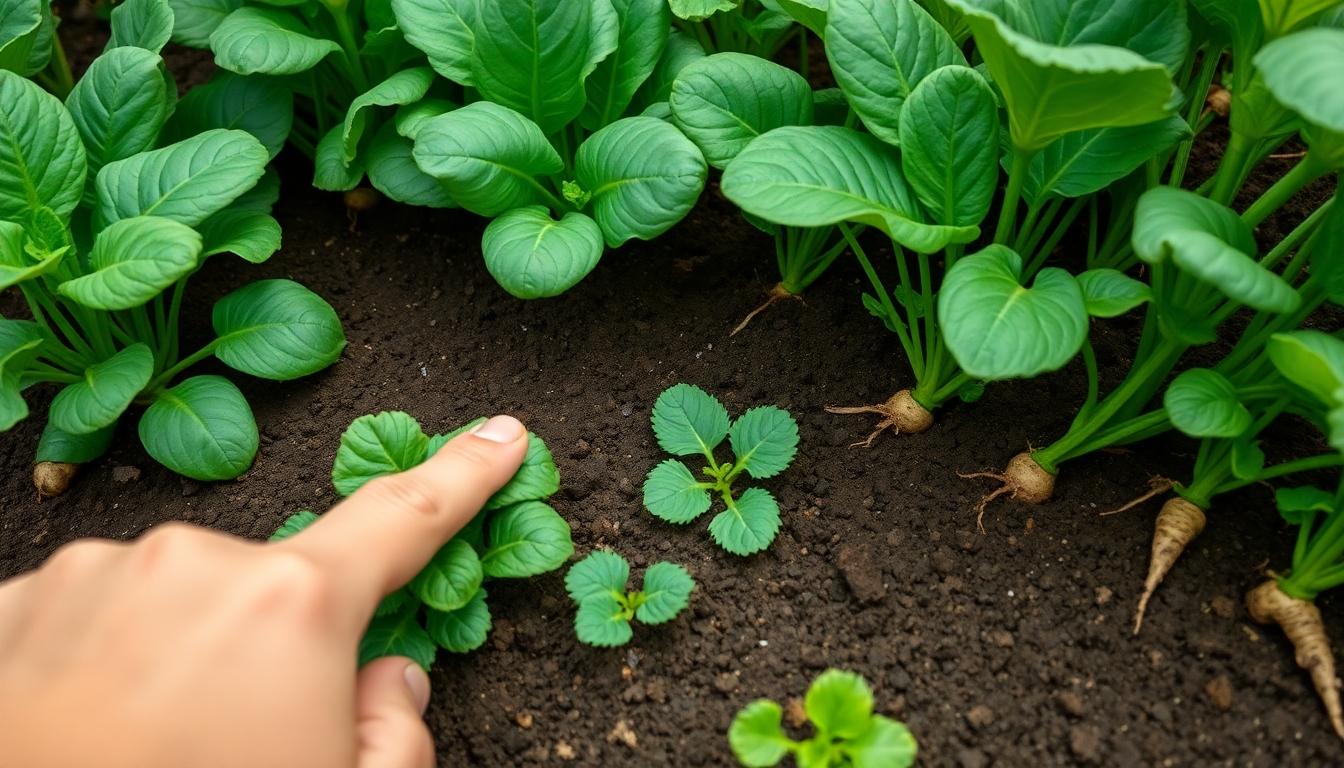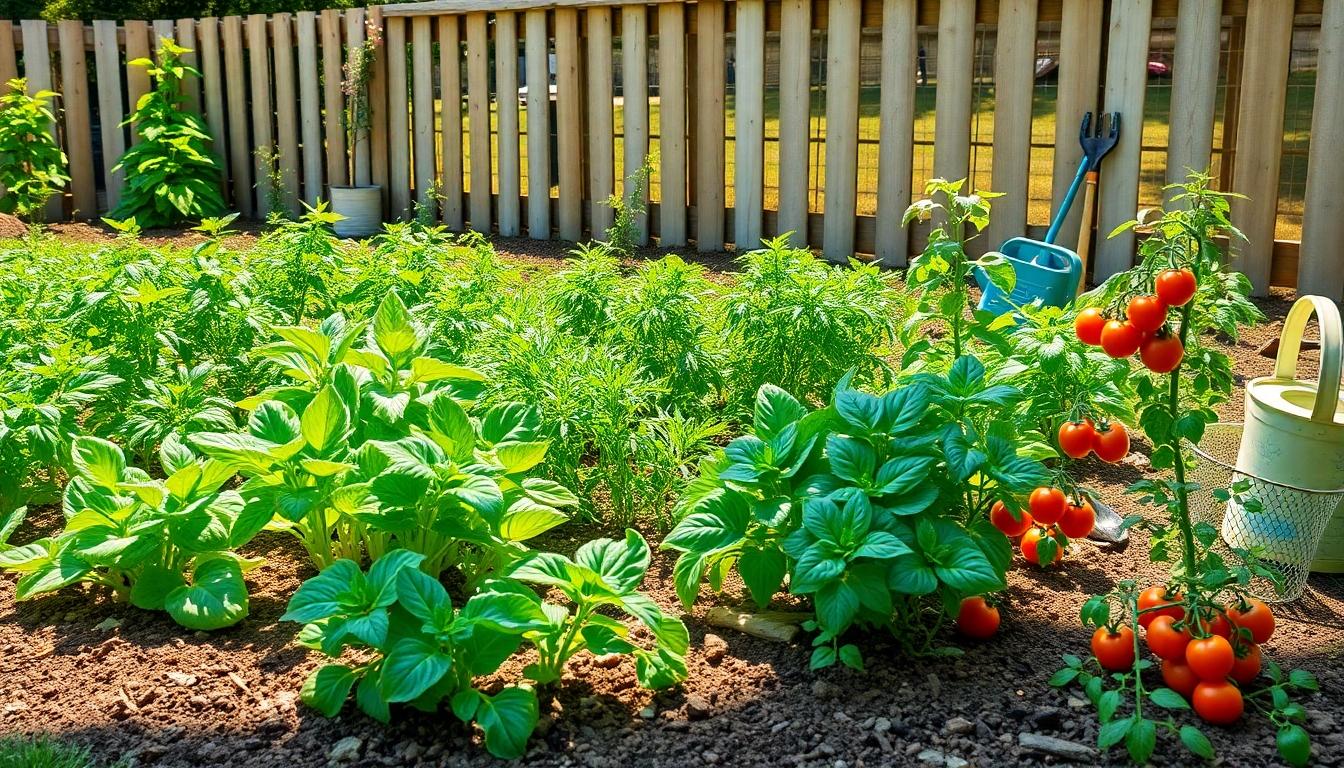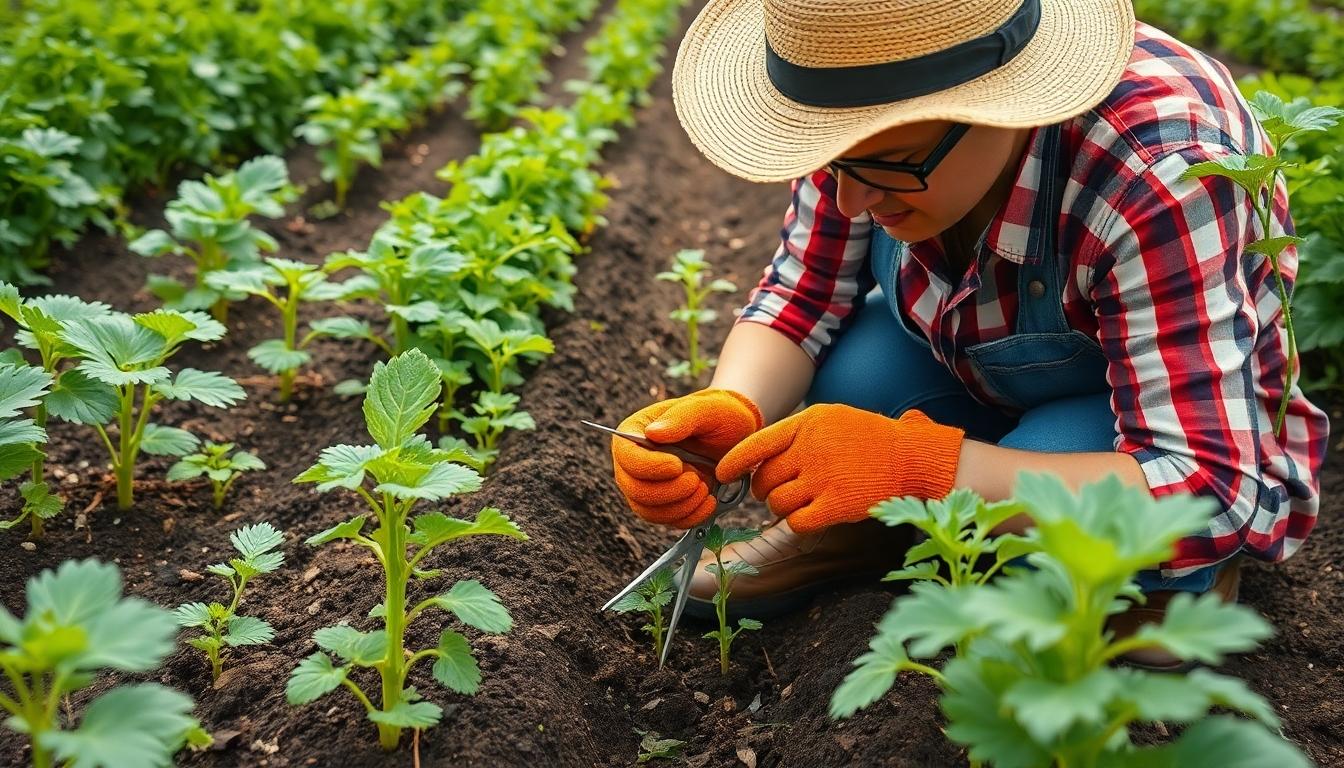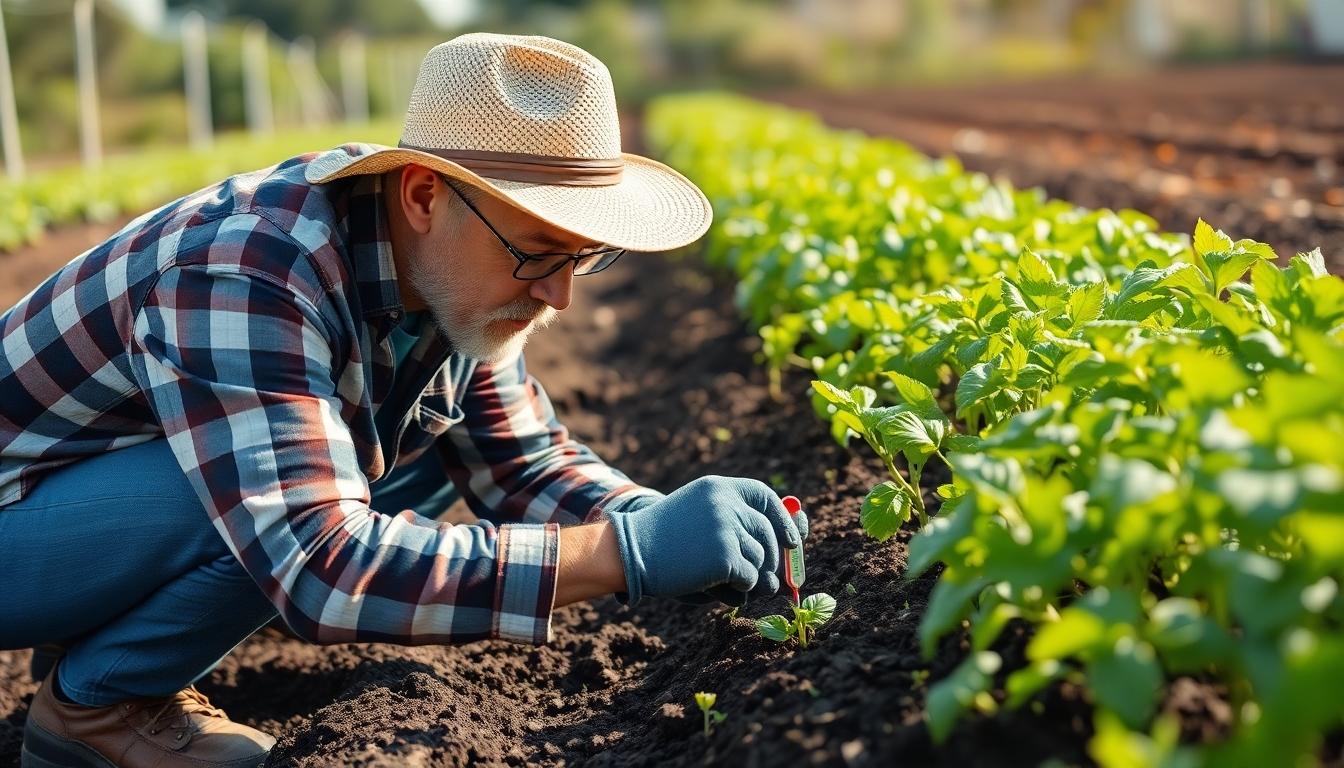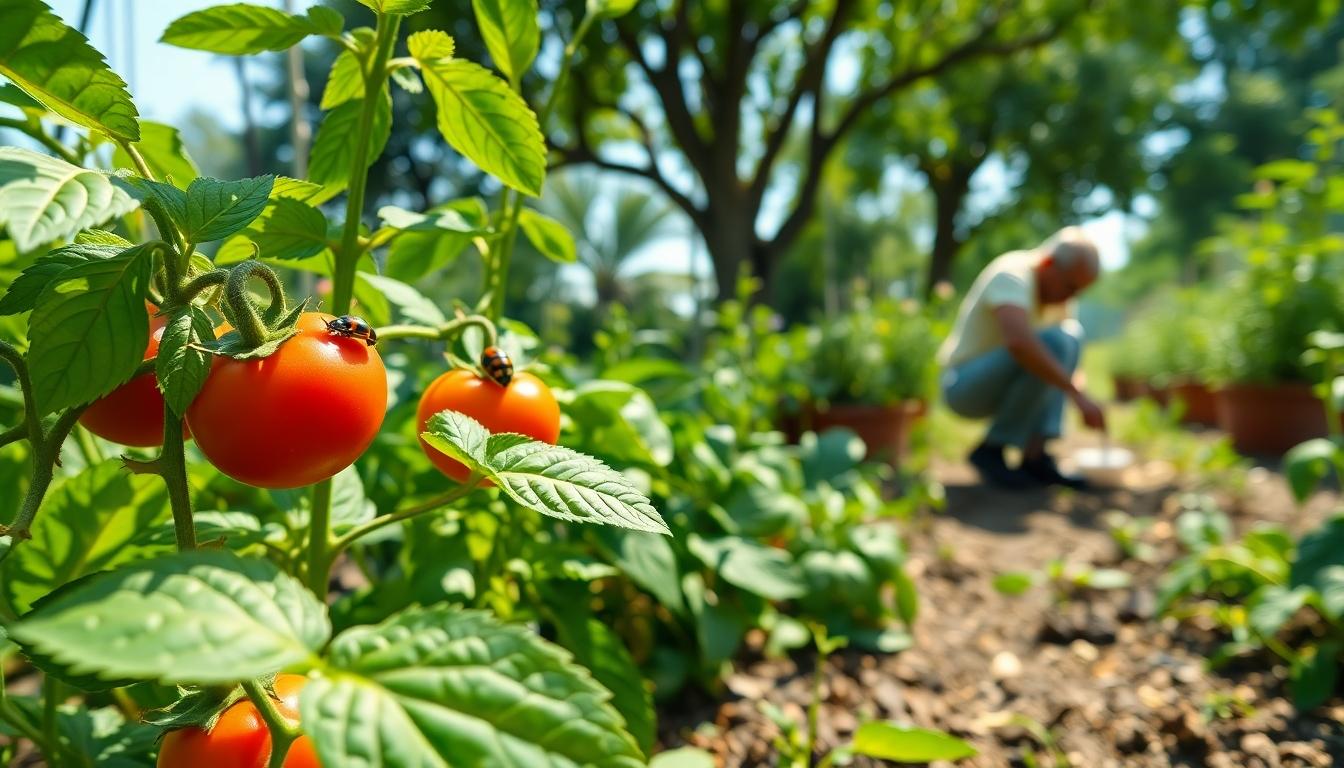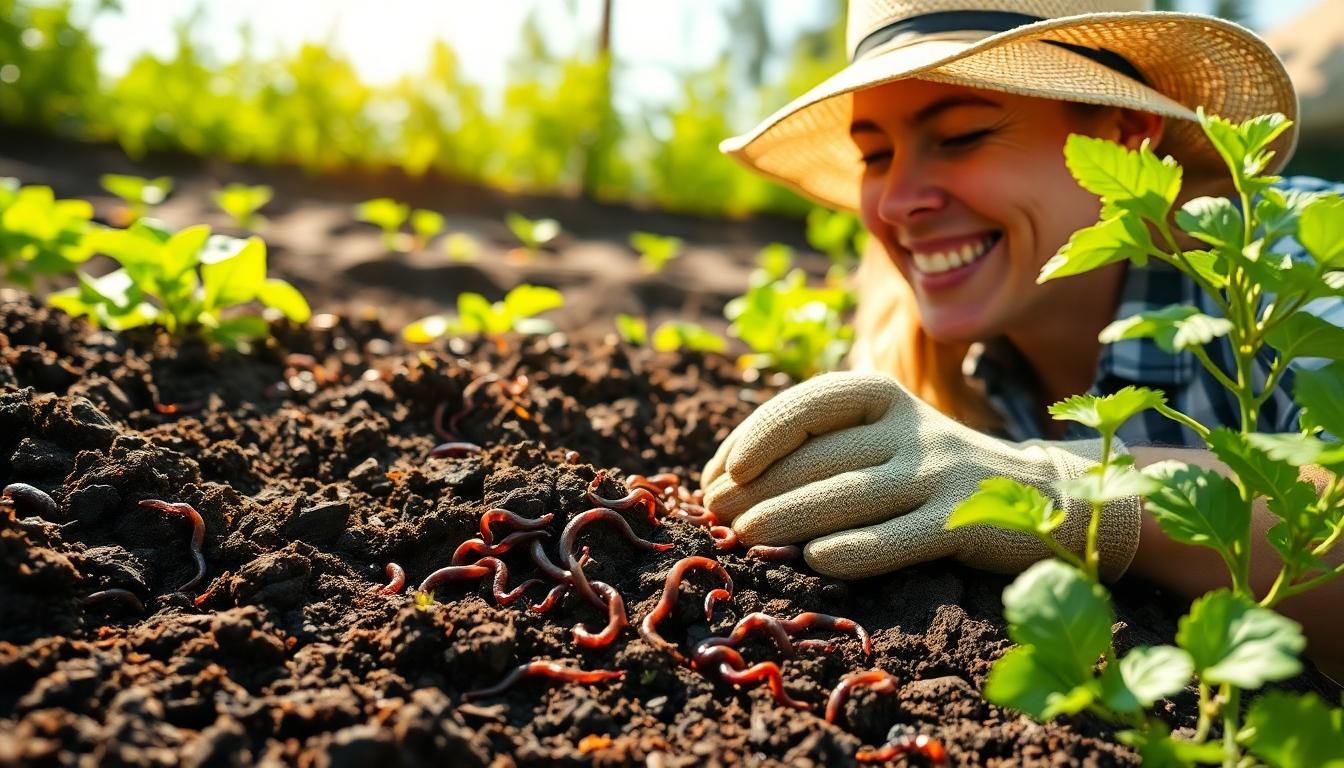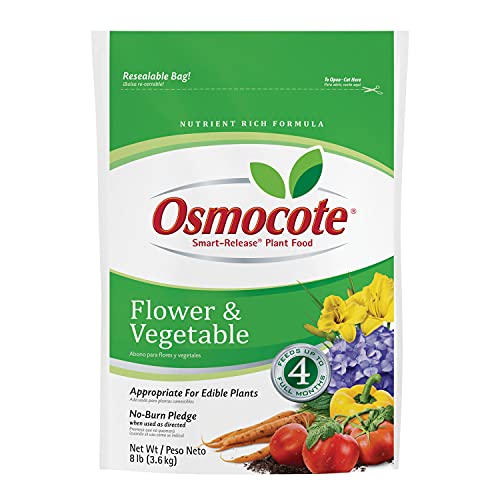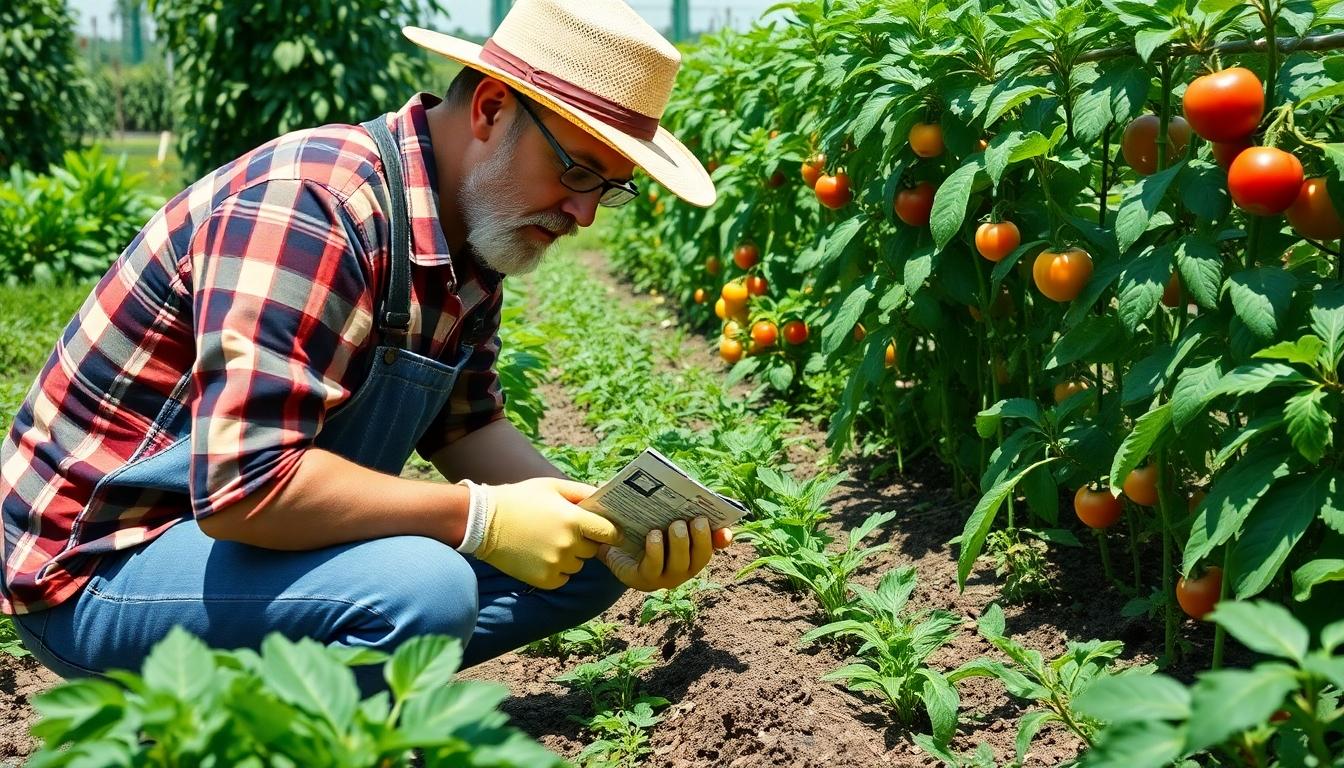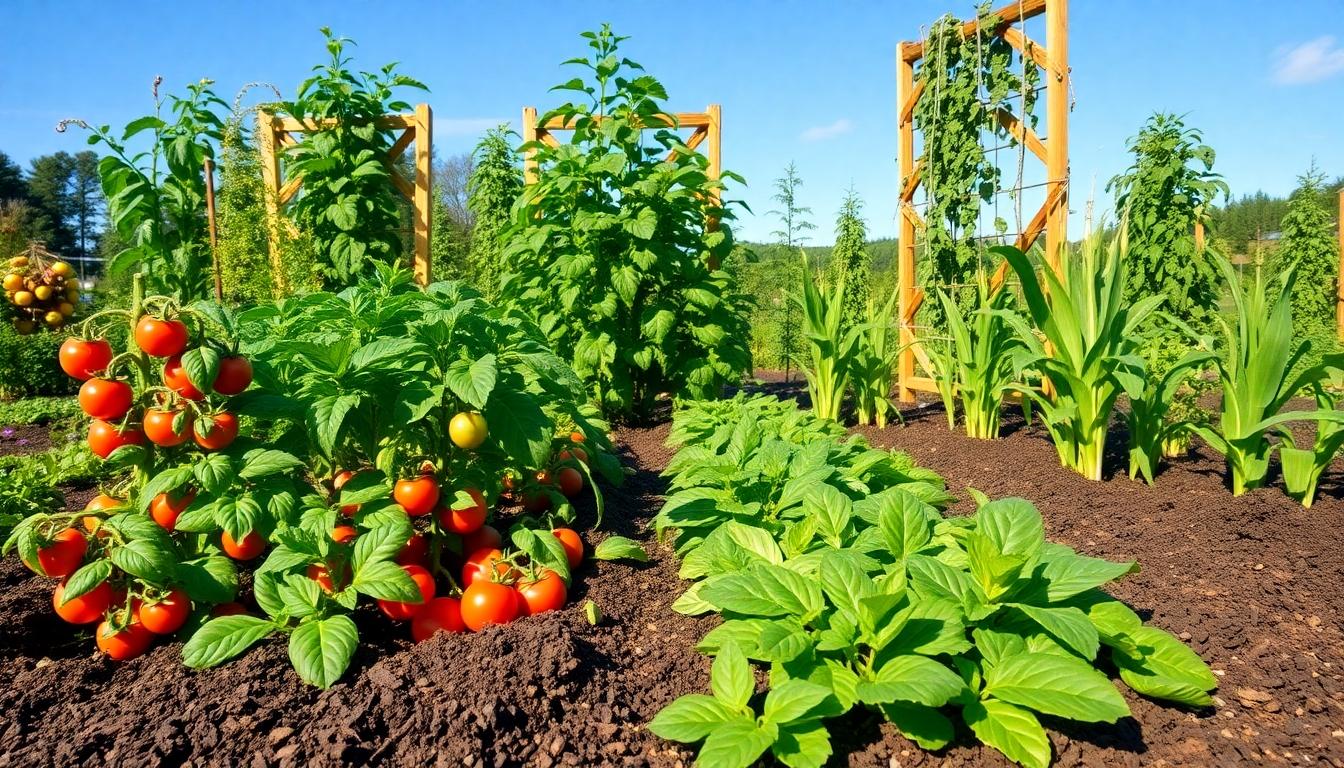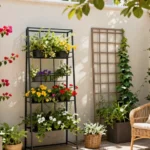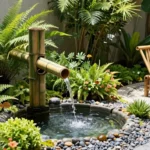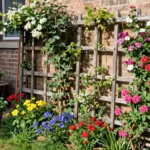Starting a vegetable garden seems straightforward—plant, water, harvest. But if you’ve watched your garden struggle even though your best efforts, you’re not alone. We’ve discovered several surprising culprits that might be sabotaging your gardening success.
From overlooked soil imbalances to unexpected pest issues, these hidden garden killers can transform your dream harvest into a disappointing yield. What’s most frustrating is that many of these problems aren’t covered in basic gardening guides. We’ll reveal these secret garden saboteurs and show you how to identify them before they destroy your crops.
Ready to transform your gardening results? Join us as we explore the most surprising reasons vegetable gardens fail and learn how to overcome these challenges for your most abundant harvest yet.
10 Surprising Reasons Your Vegetable Garden Fails and How to Fix Them
1. Your Soil pH Is Off Balance
Many garden failures stem from incorrect soil pH levels that prevent plants from accessing essential nutrients. Vegetables generally prefer a slightly acidic to neutral pH range (6.0-7.0). Testing your soil with an inexpensive kit from a garden center reveals this crucial information. Amend overly acidic soil with lime to raise pH, or add sulfur to lower pH if it’s too alkaline. Regular compost additions help stabilize pH over time while improving overall soil structure.
2. You’re Overwatering Your Plants
Drowning plants with too much water ranks among the most common yet surprising gardening mistakes. Excessive moisture creates the perfect environment for root rot and fungal diseases that silently kill your vegetables. Check soil moisture by inserting your finger about an inch deep—only water when the soil feels dry at this depth. Installing a drip irrigation system delivers precise amounts of water directly to plant roots without wetting foliage.
3. You’re Planting at the Wrong Time
Timing dramatically impacts vegetable growing success, yet many gardeners rush planting without considering their local climate. Cool-season crops like lettuce and peas fail in summer heat, while warm-season plants like tomatoes and peppers stunt in cool spring soil. Research your exact USDA hardiness zone and follow a reliable planting calendar for your region. Extending your growing season becomes possible with row covers or cold frames for early spring and late fall planting.
4. You’re Ignoring Your Garden’s Sunlight Patterns
Vegetables require adequate sunlight to produce food through photosynthesis, making light patterns crucial for garden planning. Most vegetables need 6-8 hours of direct sunlight daily to thrive. Observe your garden throughout the day to identify shady spots created by buildings, fences, or trees. Relocate your garden to a sunnier location if possible, or choose shade-tolerant vegetables like leafy greens for less sunny areas.
5. You’re Planting Too Closely Together
Crowding plants creates competition for nutrients, water, and sunlight while restricting airflow that prevents disease. Seedlings may look small initially, but many vegetables grow extensively above and below ground. Follow spacing guidelines on seed packets or plant labels precisely, even when it seems excessive. Thinning seedlings requires removing the weakest plants to give the strongest ones proper room to develop.
6. Your Soil Lacks Essential Nutrients
Nutrient deficiencies occur even in gardens that appear healthy on the surface. Yellow leaves, stunted growth, and poor fruit production signal your soil needs attention. Conduct a comprehensive soil test through your local extension office to identify exact mineral deficiencies. Apply targeted organic fertilizers based on test results rather than using all-purpose products. Rotating crops annually prevents exact nutrients from becoming depleted in the same location.
7. You Have a Hidden Pest Problem
Underground pests often destroy gardens without leaving obvious above-ground evidence. Nematodes, grubs, and wireworms damage roots while remaining invisible to gardeners. Inspect plant roots when growth seems stunted even though proper care. Beneficial nematodes attack harmful soil-dwelling insects without harming plants or beneficial organisms. Rotating crops disrupts pest life cycles and introducing predatory insects creates natural pest control systems.
8. You’re Using Poor Quality Seeds
Seed quality significantly influences garden success but rarely receives blame for failures. Old, improperly stored, or low-quality seeds germinate poorly or produce weak plants susceptible to disease. Purchase seeds from reputable companies and store unused seeds in cool, dry conditions in airtight containers. Testing germination rates before planting by placing ten seeds between damp paper towels helps determine viability.
9. You’re Not Preparing the Soil Properly
Skipping proper soil preparation guarantees disappointing results even with perfect weather conditions. Compacted soil restricts root growth and water penetration essential for plant development. Remove all weeds and grass before planting, then incorporate 2-3 inches of compost into the top 8-10 inches of soil. Avoid working wet soil which creates hard clumps that roots struggle to penetrate.
10. You’re Neglecting Garden Maintenance
Gardens require consistent attention beyond initial planting and occasional watering. Weeds compete aggressively for resources, while pests and diseases spread rapidly when unchecked. Establish a regular maintenance schedule including weekly weeding, monitoring for pests, and removing diseased plant material promptly. Mulching with organic materials suppresses weeds while conserving soil moisture and gradually improving soil quality as it breaks down.
Poor Soil Quality: The Hidden Foundation of Garden Failure
Many vegetable gardens fail because of what lies beneath the surface. Poor soil quality acts as a silent saboteur, undermining even the most dedicated gardening efforts. Depleted soil nutrients and inadequate drainage significantly impact plant growth, preventing roots from developing properly and absorbing the water they need.
Nutrient Deficiencies You Didn’t Know About
Nutrient deficiencies often go undetected until your plants start showing visible signs of distress. We’ve identified several key deficiencies that commonly derail vegetable gardens:
- Calcium deficiency causes blossom end rot, particularly in tomatoes and peppers. This issue frequently worsens when inconsistent watering disrupts the plant’s ability to absorb calcium, even when it’s present in the soil.
- Nitrogen imbalance creates important problems in vegetable gardens. While plants need nitrogen for growth, excessive amounts produce weak, leggy stems that become easy targets for diseases and pests.
- Micronutrient shortages like iron, manganese, and zinc can stunt plant development without showing obvious symptoms until important damage has occurred.
How Soil pH Secretly Sabotages Your Plants
Soil pH fundamentally controls which nutrients your plants can access, regardless of what fertilizers you apply. Most vegetables thrive in slightly acidic to neutral soil with pH levels between 6.0 and 7.0. When pH levels fall outside this optimal range, plants struggle to absorb essential nutrients even though their presence in the soil.
Alkaline soils (pH above 7.0) lock up iron, manganese, and phosphorus, causing yellowing leaves and poor fruit development. Acidic soils (pH below 6.0) can make metals like aluminum more soluble, potentially reaching toxic levels for sensitive plants.
Regular soil testing reveals these hidden pH issues before they devastate your garden. We recommend conducting a comprehensive soil test annually to identify both pH imbalances and nutrient deficiencies before planting. Garden centers and agricultural extension offices offer affordable testing services that provide exact amendment recommendations for your garden’s unique conditions.
Overwatering: When Too Much Love Drowns Your Garden
Excessive watering is one of the most common yet overlooked reasons for vegetable garden failure. When you shower your plants with too much water, you’re actually disrupting their root oxygen intake and creating perfect conditions for root rot, particularly in poorly drained soils. Plants that receive too much water typically show yellowing leaves, stunted growth, and paradoxically, wilting even though the soil remains moist.
Signs Your Plants Are Drowning
Identifying overwatering early can save your vegetable garden from disaster. Yellow leaves without any visible pest damage are often the first warning sign that your plants are receiving too much water. Mushy stems or roots indicate advanced water damage and potential rot setting in at the plant’s foundation. The appearance of algae or fungal growth on the soil surface is another telltale sign that your garden is getting excessive moisture. These symptoms often appear before plants completely fail, giving gardeners a chance to adjust their watering practices before permanent damage occurs.
Creating the Perfect Watering Schedule
Most vegetable plants require approximately 1 inch of water weekly, applied only when the top inch of soil has dried out. To determine when it’s time to water, we recommend inserting your finger into the soil – if it feels dry at about an inch down, your plants are ready for a drink. Drip irrigation systems provide the most efficient way to deliver water directly to plant roots while keeping foliage dry, which helps prevent fungal diseases. Morning watering allows excess moisture to evaporate throughout the day, reducing disease risk. For container gardens, the schedule may need adjustment as they typically dry out faster than in-ground plants, especially during hot weather. Remember that different vegetables have varying water requirements – leafy greens generally need more consistent moisture than root vegetables or nightshades.
Improper Sunlight Exposure: The Light Balance Mystery
Many gardeners underestimate how critical proper sunlight exposure is for vegetable gardens. Finding the right balance between too much and too little light can make the difference between a bountiful harvest and disappointing results.
Understanding Your Garden’s Sun Map
Creating a sun map of your garden space is essential for vegetable growing success. Different areas of your garden receive varying amounts of sunlight throughout the day, with some spots getting full morning sun while others receive intense afternoon rays. Tracking sun patterns across seasons reveals surprising changes, as summer sun positions differ significantly from spring or fall exposures. Many vegetable failures occur because gardeners fail to account for these seasonal shifts, planting summer crops in spots that only receive adequate light during spring months. Professional gardeners recommend monitoring your garden space for at least 3-4 weeks before planting, noting hourly changes in sun coverage to create an accurate sun map.
Repositioning Plants for Optimal Growth
Strategically positioning plants based on their exact light requirements dramatically improves garden productivity. Leafy greens like spinach and lettuce thrive with 4-6 hours of morning sunlight but suffer in intense afternoon heat, making eastern garden sections ideal for these crops. Fruiting vegetables such as tomatoes and peppers need 6-8 hours of direct sunlight to develop properly, with studies showing up to 30% reduced yields in plants receiving insufficient light. Container gardens offer flexibility for repositioning throughout the growing season, allowing gardeners to adjust as sun patterns change. Moving struggling plants even a few feet can transform their growth trajectory, turning weak, leggy specimens into robust producers within weeks. Common signs of improper light exposure include pale leaves, stunted growth, and failure to produce fruits even though flowering.
Overcrowding Your Plants: The Space They Actually Need
Many gardeners make the critical mistake of squeezing too many plants into limited space, not realizing this significantly reduces their harvest potential. Overcrowding creates competition for nutrients, limits air circulation, and increases disease susceptibility—all factors that can devastate your carefully planned garden.
Proper Spacing Guidelines for Common Vegetables
Giving your vegetables adequate room to grow is essential for maximizing your harvest. Tomatoes require 18 to 36 inches between plants, allowing their extensive root systems to develop properly and reducing competition for nutrients. Pepper plants need 12 to 18 inches of space between them to ensure they receive sufficient sunlight and airflow, which helps prevent fungal diseases. Root vegetables like carrots and radishes should be spaced 1 to 2 inches apart to allow proper development of their edible portions without competition. Proper spacing ensures each plant receives adequate light penetration, promotes better air circulation to reduce disease pressure, and allows roots to expand freely in the soil. Remember that spacing requirements may vary depending on exact varieties, so always check seed packets for exact recommendations for your selected cultivars.
Thinning Techniques That Save Your Harvest
Thinning seedlings is often overlooked but remains crucial for preventing overcrowding as plants mature. Using scissors to cut unwanted seedlings at soil level offers the best approach, as it avoids disturbing the roots of neighboring plants that you want to keep. Transplanting thinned seedlings to other areas of your garden provides an excellent way to maximize your growing space and avoid wasting potentially productive plants. Strategic thinning should occur when seedlings develop their first true leaves, ensuring the remaining plants have ample room to thrive. Focus on removing the weakest seedlings first, leaving the strongest, most vigorous plants with proper spacing between them. Gradual thinning works best for root crops like carrots and beets, where you can harvest the smallest plants early and enjoy them as tender microgreens or baby vegetables while creating space for remaining plants to reach full size.
Planting at the Wrong Time: Calendar Mistakes That Kill Plants
Understanding Your Growing Zone’s Timeline
Many garden failures stem from ignoring climate-exact planting times in favor of generic calendar dates. Blindly following calendar-based planting advice without considering your local conditions can doom your vegetable garden from the start. Your local USDA growing zone determines which plants will thrive and when they should be planted. Frost dates vary significantly across regions, making it essential to know both your last spring frost and first fall frost dates. Rather than relying on traditional planting holidays (like Memorial Day), we recommend using soil temperature as your guide—a soil thermometer is an inexpensive tool that provides much more accurate planting information than any calendar. Most summer crops require soil temperatures of 60-70°F to germinate properly, while cool-season crops can tolerate soil as cold as 40°F. Testing soil temperature at planting depth (about 2 inches) in the morning for several consecutive days gives you the most reliable data for successful planting timing.
Seasonal Planting Charts That Actually Work
Generic planting calendars frequently lead to disappointing results because they fail to account for microclimate variations. Instead of following standard charts, we suggest creating customized planting schedules based on soil temperature readings and local frost data from nearby weather stations. Spring crops like spinach and peas can be planted when soil temperatures consistently reach 40°F, while heat-loving summer vegetables such as tomatoes and squash need soil temperatures between 60-70°F for proper development. For fall gardening success, calculate planting dates by counting backward from your first expected frost—brassicas like kale and broccoli should be planted 6-8 weeks before that date. Keeping a garden journal to track planting dates, weather conditions, and harvest results year after year will help you develop a personalized planting timeline that accounts for your garden’s unique conditions. This approach proves far more effective than relying on generalized planting advice that doesn’t consider your exact growing environment.
Pest Problems You’re Missing Until It’s Too Late
Gardens often fail because pests establish damaging populations before gardeners notice their presence. These hidden invaders can destroy crops practically overnight, leaving gardeners wondering what went wrong.
Identifying Stealth Garden Invaders
Most garden pests do their damage secretly, making early detection challenging. Soil-dwelling larvae like cutworms operate under cover of darkness, silently attacking young seedlings as they emerge from the soil. Aphids and whiteflies frequently hide underneath leaves, making them easy to miss during casual garden inspections while they transmit viruses and drain plant vitality. These sneaky pests can establish large colonies before visible plant damage appears, making prevention significantly more effective than treatment. Regular inspection of leaf undersides, careful monitoring of seedling health, and setting up pest traps can help detect problems early. Signs of hidden pest activity include unexplained wilting, holes in leaves that appear overnight, stunted growth, or curling foliage. Monitoring should increase during seasonal change periods when many pest populations explode in response to temperature shifts.
Natural Pest Control Methods That Preserve Your Network
Effective pest management doesn’t require destroying your garden’s delicate network. Companion planting offers excellent protection—marigolds naturally deter harmful nematodes while basil helps repel thrips from nearby plants. Introducing beneficial insects serves as another powerful strategy, with ladybugs providing effective aphid control and beneficial nematodes targeting soil-dwelling pests without harming plants. Physical barriers like floating row covers exclude insect pests such as cabbage moths while still allowing light and water to reach plants. We recommend avoiding broad-spectrum pesticides that kill indiscriminately, as these products eliminate valuable predatory insects like lacewings that naturally control pest populations. Compost tea applications strengthen plant immunity and enhance soil microbiomes, creating natural resistance to pest pressures. Pollinator decline due to excessive pesticide use directly impacts fruit production, particularly in crops like zucchini that depend on insect pollination for successful fruit set. Creating diverse plantings with flowers that attract beneficial insects builds a self-regulating garden network that maintains balance without requiring constant intervention.
Neglecting Soil Microbes: The Invisible Garden Helpers
While many gardeners focus on watering and sunlight, they often overlook the microscopic workforce beneath their feet. Soil microbial activity is a critical yet frequently ignored factor in plant health. These beneficial bacteria and fungi form symbiotic relationships with plant roots, directly aiding nutrient absorption and improving disease resistance. Excessive tilling or overuse of chemical fertilizers disrupts these delicate microbial ecosystems, eventually weakening plants’ natural defenses against pests and environmental stressors.
Building a Thriving Soil Network
Creating healthy soil requires attention to organic matter, microbial diversity, and pH balance. Compacted or nutrient-deficient soil leads to stunted growth and increased pest vulnerability, with many garden failures attributed to inadequate soil preparation even though proper watering routines. Plants struggle to thrive in soil lacking proper microbial populations, as these invisible helpers break down organic matter into usable nutrients. Regular soil testing reveals imbalances that can be remedied through appropriate amendments like aged manure or leaf mold to restore microbial activity.
We’ve found that plants growing in microbe-rich environments develop stronger root systems and demonstrate improved resistance to drought and disease. Avoiding excessive digging preserves fungal networks that help nutrient exchange between plants. Most successful gardeners carry out minimal tillage practices to maintain soil structure and protect underground microbial communities that took years to establish.
Compost Secrets for Microbial Success
The quality of your compost directly influences microbial populations in your garden soil. Incomplete decomposition or chemical contamination in compost can seriously harm soil life and undermine plant health. Avoiding synthetic additives is essential, as pesticides and artificial fertilizers significantly reduce microbial diversity and disrupt beneficial relationships between plants and soil organisms.
Layering greens and browns in your compost pile creates a balanced carbon-to-nitrogen ratio that accelerates decomposition and enriches microbial activity. Fresh kitchen scraps provide nitrogen-rich “green” materials while dried leaves and cardboard contribute carbon-heavy “brown” elements. Prioritizing compost maturity makes a substantial difference – fully cured compost (aged 3-6 months) ensures stable nutrients and active beneficial microbes that immediately enhance soil structure.
Certain gardening oversights directly impact soil microbiology. Harmful insects like harlequin bugs specifically target weakened plants growing in compromised soils with poor microbial balance. Seed quality matters tremendously when working to improve soil health – old or improperly stored seeds germinate poorly, wasting valuable resources in suboptimal soil conditions.
For optimal implementation, we recommend planting cover crops such as clover or vetch between growing seasons to protect microbial habitats. Reducing tillage preserves fungal networks, while applying organic mulches maintains consistent moisture and temperature conditions that soil microbes require to flourish.
Using the Wrong Fertilizers at the Wrong Time
Fertilizer application might seem straightforward, but misunderstanding fertilizer types and timing can significantly impact your vegetable garden’s success. Too much nitrogen can lead to lush foliage but poor fruit production, creating an imbalance that undermines your harvest potential.
Decoding Fertilizer Numbers for Your Garden
Fertilizer packaging displays those mysterious numbers (like 10-10-10 or 5-10-5) that many gardeners overlook or misinterpret. These numbers represent the N-P-K ratio—nitrogen, phosphorus, and potassium—the three primary nutrients plants need for healthy growth. Nitrogen promotes leafy green growth, phosphorus supports root development and flowering, while potassium enhances overall plant strength and disease resistance. Understanding these numbers helps you select the right fertilizer for exact growing stages; for instance, high-nitrogen fertilizers benefit leafy vegetables like lettuce and spinach, while tomatoes and peppers perform better with balanced or phosphorus-rich options during fruiting. Choosing the wrong ratio can create nutrient imbalances that manifest as stunted growth, poor fruit production, or increased susceptibility to pests and diseases.
Timing Your Fertilization for Maximum Yield
Applying fertilizers at the wrong time can waste nutrients and potentially harm your plants. Most vegetables benefit from balanced fertilizers applied after germination when true leaves appear and again during the fruiting stage. Early-season fertilization should focus on root development and establishing strong plants, while mid-season applications support flowering and fruit production. Avoid fertilizing during extreme weather conditions when plants are stressed, as this can worsen their condition rather than help. Heavy feeders like tomatoes and corn require more frequent fertilization throughout the growing season, whereas beans and peas need minimal fertilizer since they fix nitrogen in the soil. We recommend developing a fertilization calendar based on what you’re growing, applying smaller amounts more frequently rather than infrequent heavy applications that can lead to nutrient runoff or salt buildup in the soil.
Ignoring Companion Planting Principles
Companion planting is more than just an old gardening folklore—it directly influences nutrient uptake, pest control, and pollination in your vegetable garden. Neglecting these natural plant relationships often leads to poor yields, increased pest pressure, and stunted growth that can leave gardeners puzzled about what went wrong.
Plant Combinations That Boost Growth
Strategic plant pairing can dramatically improve your garden’s health and productivity without chemical interventions. Tomatoes and basil make an excellent partnership, with basil effectively repelling harmful whiteflies and thrips while improving the flavor of your tomatoes. The classic “Three Sisters” combination of corn and beans works because beans fix nitrogen in the soil that corn needs for robust growth, while the corn stalks provide natural support for the climbing beans. Carrots benefit tremendously when planted alongside onions, as the strong scent of onions deters carrot rust flies that can devastate your root crop. These beneficial combinations create a natural defense system and promote better nutrient utilization throughout your garden beds.
Combinations That Spell Disaster for Your Garden
Some plant pairings can sabotage your gardening efforts no matter how diligently you water or weed. Tomatoes and potatoes planted in close proximity increase each other’s vulnerability to blight and attract Colorado potato beetles, creating a perfect storm for disease outbreak. Beans suffer significantly when grown near onions or peppers—onions stunt bean growth through chemical interactions, while peppers compete aggressively for the same nutrients. Cucumbers experience stunted development when surrounded by aromatic herbs like sage and mint due to growth-inhibiting compounds these herbs release. Certain plants demonstrate allelopathic properties, with sunflowers being a notable example as they secrete substances from their roots that inhibit the growth of nearby plants. Understanding these incompatible relationships is just as crucial as knowing beneficial companions, as ignoring them can result in mysterious garden failures even though your best efforts in other aspects of garden care.
Inconsistent Maintenance: The True Culprit of Garden Failure
Growing a thriving vegetable garden requires more than just initial enthusiasm. We’ve seen how soil quality soil microbes and proper watering form the foundation while understanding sunlight patterns and spacing prevents competition among plants.
The key takeaway? Successful gardening isn’t about avoiding mistakes but recognizing and adapting to them. Every garden failure offers valuable lessons that improve our skills. By addressing these surprising challenges we’ve discussed you’ll be better equipped to transform disappointing harvests into abundant ones.
Remember that gardening is both a science and an art. With proper planning attention to timing and consistent care your vegetable garden can flourish even though these hidden obstacles. Start implementing these answers today and watch your garden transform.
Frequently Asked Questions
Why is my vegetable garden failing despite my best efforts?
Your garden may be failing due to hidden issues like soil pH imbalances, improper watering, inadequate sunlight, or overcrowding. Many gardeners overlook these factors, focusing instead on visible problems. Soil quality forms the foundation of garden success, and issues with nutrients, watering schedules, and planting timing can significantly impact results. Regular soil testing and proper garden planning can help identify and resolve these hidden obstacles.
How can I tell if I’m overwatering my vegetable garden?
Look for yellowing leaves, mushy stems, and consistently soggy soil. Overwatering disrupts root oxygen intake and can lead to root rot. Most vegetables need approximately 1 inch of water weekly, with requirements varying by plant type and weather conditions. Consider implementing drip irrigation and watering in the morning to allow excess moisture to evaporate. Different vegetables have varying water needs, so research specific requirements for your plants.
How important is sunlight mapping for my garden’s success?
Sunlight mapping is crucial for garden success. Many vegetable failures occur because gardeners don’t account for seasonal sunlight shifts. Create a sun map by tracking light patterns throughout the day and across seasons. Position plants strategically based on their light requirements—leafy greens prefer morning sun while fruiting vegetables need more direct light. Signs of improper light exposure include pale leaves and stunted growth.
What’s the proper spacing for vegetable plants?
Proper spacing prevents competition for nutrients, improves air circulation, and reduces disease susceptibility. Tomatoes need 24-36 inches between plants, peppers 12-18 inches, and root vegetables 2-4 inches. As seedlings grow, thin them using scissors to cut unwanted plants at soil level. This strategic thinning ensures remaining plants have ample space to thrive. Consider transplanting thinned seedlings elsewhere to maximize growing space.
When is the best time to plant my vegetables?
The best planting time depends on your local climate conditions and USDA growing zone, not generic calendar dates. Use soil temperature as a more accurate guide—most cool-season crops germinate at 40-75°F, while warm-season vegetables prefer 65-95°F. Create a customized planting schedule based on local frost data and soil temperature readings. Keep a garden journal to track successful planting dates and develop a personalized timeline for your unique growing environment.
How can I detect and control garden pests early?
Regularly inspect plants, focusing on leaf undersides and stem joints where pests often hide. Look for cutworms at night, monitor for aphids on new growth, and watch for telltale signs like holes in leaves or sticky residue. Implement natural control methods including companion planting, introducing beneficial insects like ladybugs, and using physical barriers. Avoid broad-spectrum pesticides that harm beneficial species. Create a diverse garden ecosystem to self-regulate pest populations.
Why are soil microbes important for my vegetable garden?
Soil microbes are crucial for plant health as they help break down organic matter, make nutrients available to plants, and improve disease resistance. Excessive tilling and chemical fertilizers can disrupt these beneficial microbial communities. Enhance microbial activity by practicing minimal tillage, adding compost, using cover crops, and maintaining proper soil pH. A thriving microbial ecosystem creates more resilient plants and improves overall garden productivity.
How do I choose and apply the right fertilizer?
Understand the N-P-K ratio (nitrogen-phosphorus-potassium) on fertilizer packaging to select the right type for your plants’ growth stage. Use balanced fertilizers after germination, nitrogen-rich options for leafy growth, and phosphorus-heavy formulas during flowering and fruiting. Apply fertilizers when plants are actively growing and avoid application during extreme weather. Develop a fertilization calendar tailored to specific crops to maximize yield and prevent nutrient imbalances.
What is companion planting and why does it matter?
Companion planting involves strategically pairing plants to enhance nutrient uptake, control pests, and improve pollination. Beneficial combinations include tomatoes with basil (improves flavor and repels pests) and the “Three Sisters” planting of corn, beans, and squash (provides mutual support). Avoid detrimental pairings like tomatoes with potatoes (share diseases) or beans with onions (inhibit growth). Understanding these plant relationships helps prevent mysterious garden failures and optimizes overall garden health.
How often should I test my garden soil?
Conduct comprehensive soil tests annually, ideally in fall or early spring before planting. Regular testing helps identify pH imbalances and nutrient deficiencies that can silently undermine plant growth. Most vegetables prefer slightly acidic soil (pH 6.0-7.0). Home test kits provide basic information, but professional lab tests offer more detailed analysis. Address deficiencies with appropriate amendments like lime to raise pH or sulfur to lower it, and add specific nutrients based on test results.









